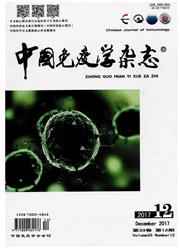

 中文摘要:
中文摘要:
目的:探讨慢性肾脏病(CKD)病程中所产生的病理产物尿蛋白及晚期糖基化终产物(AGE)对肾小管上皮细胞(tubular epithelial cells,TECs)溶酶体结构与功能的影响,为阻止或延缓CKD病情进展探索新思路。方法:临床上选取未经特殊治疗的微小病变肾病综合征(MCNS)患者(n=11)、糖尿病肾病(DN)患者(n=11)及活检基本正常(n=6)的肾组织标本,以溶酶体相关膜蛋白1(lysosomal-associated membrane protein 1,LAMP1)和组织蛋白酶B(cathepsin B,CB)行间接免疫荧光染色;体外以8 g/LJ尿蛋白或100 mg/L晚期糖基化终产物刺激人肾小管上皮细胞系(HK-2细胞),以LAMP1和CB行间接免疫荧光染色,检测CB及组织蛋白酶L(cathepsin L,CL)活性,并观察DQ-卵清蛋白降解情况。结果:MCNS及DN患者TECs存在溶酶体膜透化(lysosomal membrane permeabilization,LMP)现象。与正常对照组相比,尿蛋白及AGE-BSA均可致HK-2细胞LMP发生率上升,CB及CL活性降低,溶酶体对DQ-卵清蛋白的降解能力降低(P〈0.05)。结论:CKD病理产物尿蛋白和晚期糖基化终产物均可致TECs出现LMP现象,并使溶酶体消化功能下降,这可能是CKD肾小管间质纤维化进展的重要机制之一。
 英文摘要:
英文摘要:
AIM:To investigate the effects of pathological products, urinary proteins and advanced glycosyla-tion end products ( AGE) produced in the progression of chronic kidney disease ( CKD) , on the structure and function of lysosomes in renal tubular epithelial cells ( TECs ) , and try to find a novel approach for preventing or delaying CKD. METHODS:The renal specimens of the untreated patients with minimal change nephrotic syndrome (MCNS), diabetic nephropathy (DN) or normal kidney were collected.The expression of lysosomal-associated membrane protein 1 (LAMP1) and cathepsin B ( CB) was studied in TECs by indirect immunofluorescent staining.Human renal tubular epithelial cell line HK-2 was incubated with 8 g/L urinary proteins or 100 mg/L AGE.The expression of LAMP1 and CB was investigated by indirect immunofluorescence and the activity of CB and cathepsin L ( CL) was measured by biochemical and enzymatic as-says.The degradation of DQ-ovalbumin was also determined.RESULTS: The lysosomal membrane permeabilization oc-curred in the TECs of MCNS and DN patients.After treatment with urinary proteins or AGE-BSA, the lysosomal membrane permeabilization of the HK-2 cells was increased.The activity of CB and CL and degradation of DQ-ovalbumin were de-creased as compared with normal control group.CONCLUSION:The digestive function of lysosome was decreased and ly-sosomal membrane permeabilization occurred in the TECs exposed to urinary proteins and AGE, which might be a key factor to induce the tubulointerstitial fibrosis.
 同期刊论文项目
同期刊论文项目
 同项目期刊论文
同项目期刊论文
 期刊信息
期刊信息
